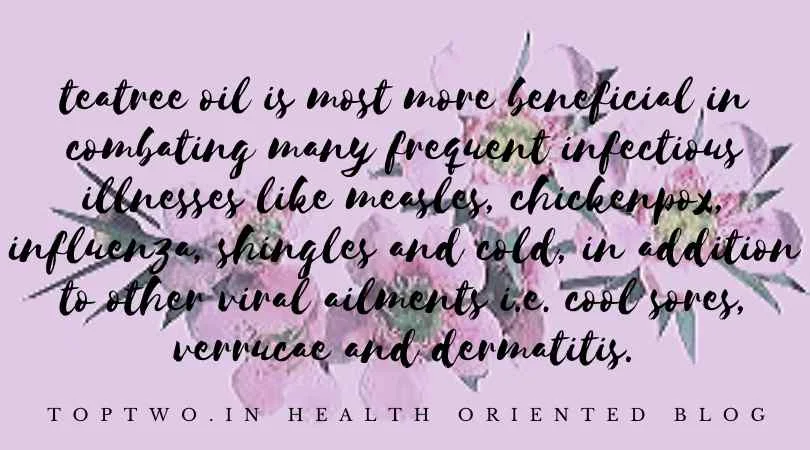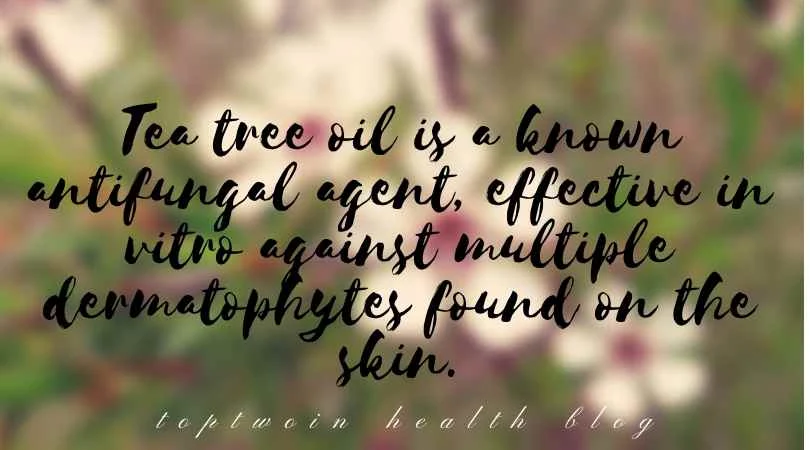Introduction-Tea tree oil
Tea tree oil is a yellowish green-tinged essential oil with a fresh camphoraceous odour. It is taken from the leaves of the Melaleuca alternifolia which is native to the northeast coast of New South Wales, Australia. The oil is claimed to have beneficial cosmetic and medical properties (including antiseptic and antifungal action). The term "tea tree oil" is somewhat of a misnomer since Melaleuca alternifolia is a paperbark rather than a tea tree (genus Leptospermum).Tea tree oil must additionally not be confused with oil, the sweetish seasoning and tea oil out of also the olive oil plant Camellia oleifera or pressed seeds of this tea plant Camellia sinensis.

History and Extraction
Indigenous Australians have used oil extracted from the tree's needles for hundreds, and possibly thousands, of years. Currently, tea tree oil is obtained by steam distillation of the leaves. Of the over 100 compounds contained in the oil, terpinen-4-ol is responsible for most of the antimicrobial actions. Although tea tree oil is normally extracted from Melaleuca alternifolia commercially, it can also be extracted from Melaleuca dissitiflora and Melaleuca linariifolia. Tea tree oil is defined by international standard ISO 4730 ("Oil of Melaleuca, Terpinen-4-ol type"), which specifies levels of 14 components which are needed to define the oil as "tea tree oil."
Medicinal Uses
Tea tree oil has been recognized as a potent antiseptic in Australia anecdotally for much longer than there has been scientific evidence. However, recent studies support a role for tea tree oil in skin care and treatment of various ailments. Tea tree oil is a known antifungal agent, effective in vitro against multiple dermatophytes found on the skin. In vivo, shampoo with 5% tea tree oil has been shown to be an effective treatment for dandruff due to Malassezia furfur, the most common cause of the condition. Effectiveness of topical tea tree oil preparations for Candidiasis is supported by their ability to kill Candida in vitro.In the treatment of acne, topical application of 5 Percent tea Tree Oil Also Has Proven an effect comparable to 5% benzoyl peroxide with less risk of adverse drug reaction, albeit with slower onset of action. Tea tree oil is also effective for treating bug bites, boils and minor wounds.[citation needed] It may cause less of a stinging sensation than some other antiseptics.[citation needed] Like a potent antifungal broker, teatree oil is most more beneficial in combating many frequent infectious illnesses like measles, chickenpox, influenza, shingles and cold, in addition to other viral ailments i.e. cool sores, verrucae and dermatitis.

Safety
Tea tree oil is used almost exclusively externally. A patch test is advisable before using items containing tea tree oil because in high concentrations tea tree oil can cause irritation and some individuals may experience hypersensitivity since it can be allergenic. Tea tree oil is toxic if ingested, even if taken in moderate doses. The oil should never be taken by mouth, as even small amounts could be dangerous. Data on oral tea tree oil toxicity in humans are sparse aside from several anecdotal reports of toxic effects following oral ingestion. Symptoms may include ataxia, dizziness, nausea and disorientation. Coma may result from higher doses. The use of tea tree oil in oral products like toothpaste is considered safe as long as the tea tree oil is not ingested and it is not accessible to small children.
 PTWO.IN
PTWO.IN



No comments:
Post a Comment
Welcome to our community! Your thoughts matter, and we'd love to hear from you. Share your insights, experiences, or simply say hello in the comments below. Let's create a space where ideas flourish, and conversations thrive. Your input is invaluable, and we look forward to building a vibrant dialogue together!